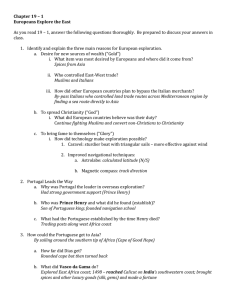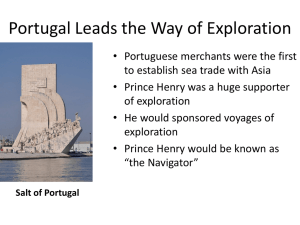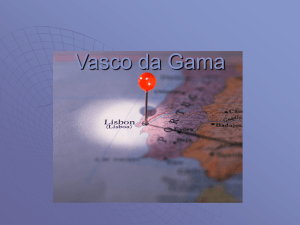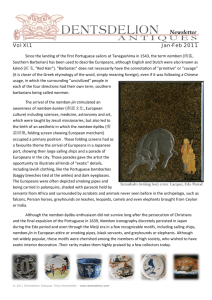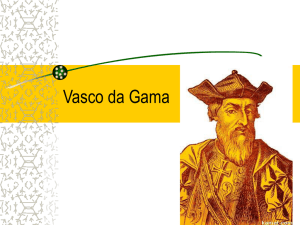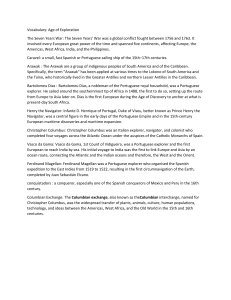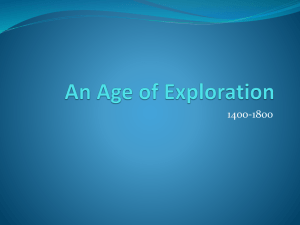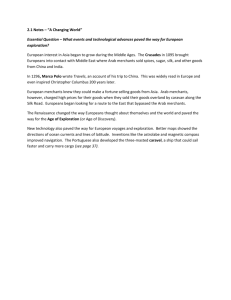Ch 16 348-355
advertisement
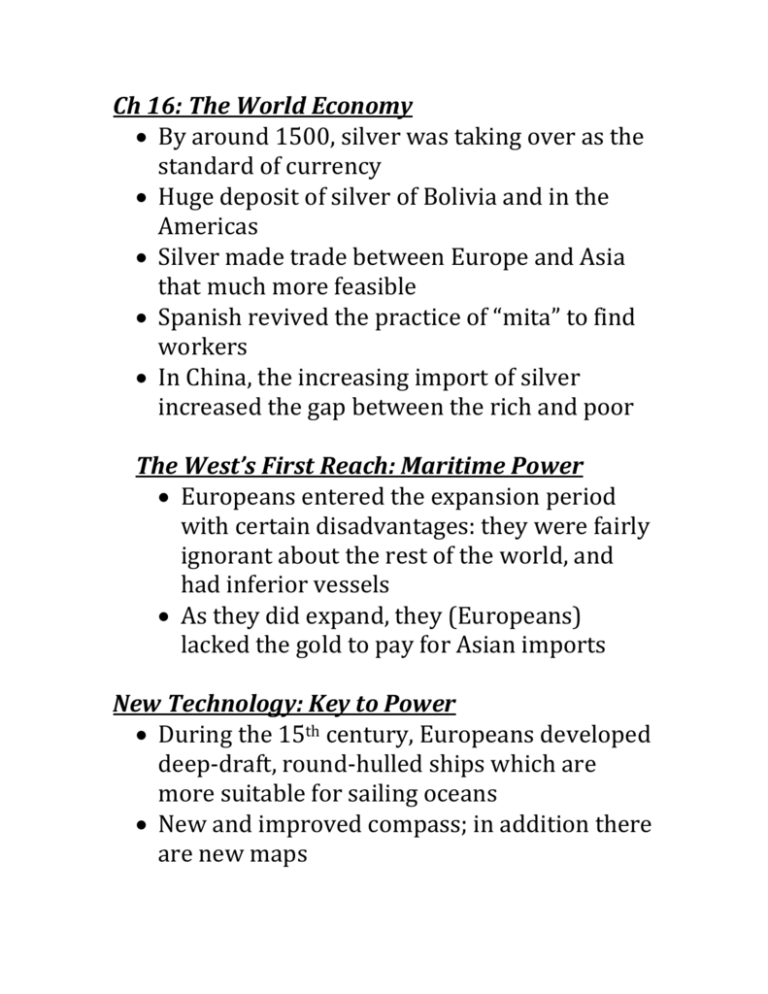
Ch 16: The World Economy By around 1500, silver was taking over as the standard of currency Huge deposit of silver of Bolivia and in the Americas Silver made trade between Europe and Asia that much more feasible Spanish revived the practice of “mita” to find workers In China, the increasing import of silver increased the gap between the rich and poor The West’s First Reach: Maritime Power Europeans entered the expansion period with certain disadvantages: they were fairly ignorant about the rest of the world, and had inferior vessels As they did expand, they (Europeans) lacked the gold to pay for Asian imports New Technology: Key to Power During the 15th century, Europeans developed deep-draft, round-hulled ships which are more suitable for sailing oceans New and improved compass; in addition there are new maps European knowledge of explosives was adapted into gunnery Metalsmiths developed the first guns and cannons, which helped Western Europe gain a naval superiority Portugal and Spain Lead the Pack Under Henry the Navigator, Portugal began exploring down the coast of Africa, bringing back slaves, spices, and stories of unfound gold Portuguese sailors ventured around the Cape of Good Hope in 1488, in search of direct route to India were unsuccessful When Portugal found out about Spain and their explorer (Christopher Columbus), they doubled their expansion efforts The Portuguese send Vasco da Gama and his “fleet of four” to India in 1498 These Portuguese explorers originally thought that local Hindus were Christians because they observed many churches, and also experienced conflict with Muslim merchants Vasco da Gama uses guns on ships to kill Indian merchants to “send a message” Vasco da Gama’s success in India led the Portuguese to colonize Brazil Portugal also ventured out to Africa and India to establish colonies By 1514, the Portuguese had arrived in Indonesia and in China In 1542, Portuguese arrived in Japan to spread Christianity (Jesuits) At the same time, Spain was looking to follow the steps of Portugal. In 1492, Christopher Columbus set sail for India and reached the Americas which is why he called them “Indians” Spain sends Amerigo Vespucci to the Americas, which is where the name “America” comes from Under Ferdinand Magellan, Spanish ships sailed around the southern tip of S. America to eventually claim the Philippines Northern European Expeditions In the 16th century, the zeal of expansion spread to N. Europe for two reasons: monarchs in France and England got involved, and as Protestants began to compete for followers against Catholicism The shift from W. to N. Europe happened because W. Europe was still “digesting” its territorial gains, and because N. Europeans designed lighter, faster ships than their Catholic adversaries Northern Europe was more so looking for money and profit than religious gains French explorers crossed the Atlantic and colonized Canada in 1534, and eventually ventured down into eastern United States Britain began expanding to the US as early as 1497 to Canada, and around a hundred years later to the east coast of the United States The Dutch spread to SE Asia and to Africa Expansionist countries such as France, Britain, Netherlands, etc. began creating mega-companies such as the Dutch East India Company and the British East India Company Overall, expansionist voyages consisted of hardships at sea work was tiring, voyages lasted up to years sometimes, and diseases were rampant

